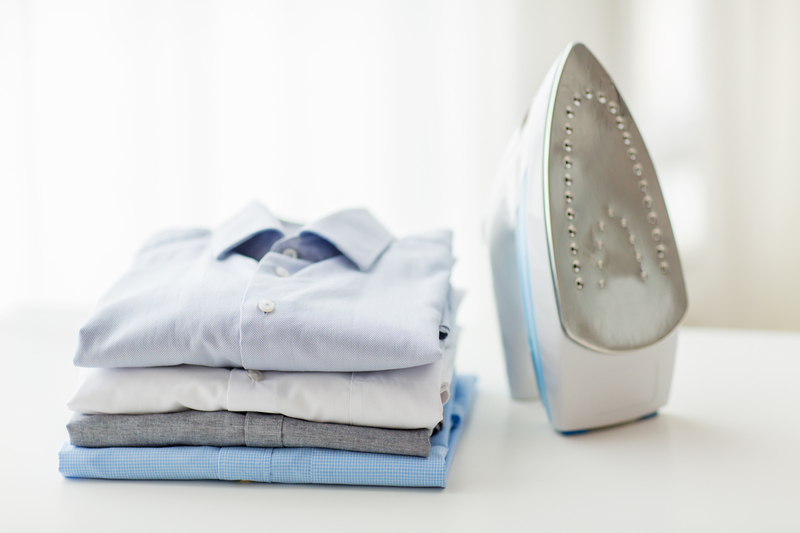Sofa Cover Preservation: Discover Damage-Free Washing Rules
Posted on 30/09/2025
Sofa Cover Preservation: Discover Damage-Free Washing Rules
Keeping your sofa covers clean, fresh, and damage-free is not just about making your living space look inviting. It's a critical aspect of sofa cover preservation that extends furniture lifespan and saves you money. This comprehensive guide outlines damage-free washing rules for all sofa cover types. Keep reading to understand the methods, precautions, and insider tips that ensure your sofa covers remain in top-notch condition.

Why Preserving Sofa Covers Matters
Sofa covers are the first line of defense against spills, dirt, pet hair, and daily wear. Proper maintenance is about more than appearances--it protects underlying upholstery and even impacts the air quality in your home.
- Extended Lifespan: Well-maintained sofa covers prevent stains and contaminants from reaching the actual sofa fabric, delaying aging.
- Enhanced Comfort: Clean and undamaged sofa covers maintain their texture, softness, and fit.
- Allergy Prevention: Preserved covers reduce dust mites, allergens, and bacteria build-up.
To reap these benefits, let's deep-dive into proven damage-free washing tips for sofa covers that actually work.
Know Your Sofa Cover Fabric
Not all sofa covers are created equal. The first rule in sofa cover care is identifying the fabric type, because washing methods differ dramatically. Here are the most common materials:
- Cotton: Durable and machine washable, but prone to shrinking at high temperatures.
- Linen: Breathable and natural, often requires cold water and gentle detergent.
- Polyester: Synthetic, resistant to wrinkles and shrinking but may pill over time.
- Velvet: Luxurious and delicate, needs spot-cleaning or professional cleaning.
- Microfiber: Stain-resistant but can retain odors if not properly washed.
- Leather/Faux Leather: Requires specialized cleaners; never machine wash.
Pro tip: Always check the manufacturer's tag for washing instructions before starting!
Damage-Free Washing Rules for Sofa Cover Preservation
To ensure maximum longevity, always adhere to these essential rules before, during, and after washing your sofa covers.
1. Pre-cleaning Rituals
- Remove Debris: Use a vacuum or lint roller to clear crumbs, dust, and pet hair from the fabric.
- Spot Test: Before washing the entire cover, test stain removal products or detergents on a hidden section.
- Fasten Closures: Zip up covers and secure Velcro or buttons to avoid snagging in the wash.
2. Choosing the Right Detergent
Mild, bleach-free detergent is always recommended for preserving color and softness. Avoid:
- Heavy-duty or harsh chemical cleaners
- Fabric softeners (can break down fibers or leave residue)
- Bleach (can discolor or weaken fibers--especially on colored or printed covers)
3. Perfecting the Washing Cycle
- Use Cold or Lukewarm Water: Hot water can shrink natural fibers and damage elastic in fitted covers.
- Gentle or Delicate Cycle: Prevents agitation that can cause pilling, fraying, or distortion.
- Don't Overload: Wash covers separately or with like items to avoid unnecessary friction.
4. Hand-Washing Best Practices
For particularly delicate or antique fabrics, hand-washing is safest:
- Fill a tub or basin with lukewarm water and mild detergent.
- Submerge the sofa cover, gently agitating with your hands to release dirt.
- Rinse thoroughly until all soap is gone--residue can attract dust and cause stains.
- Squeeze (don't wring!) excess water, to avoid stretching the fibers.
5. Optimal Sofa Cover Drying Techniques
- Air Dry Whenever Possible: Lay covers flat or drape over a clothesline; avoid direct sunlight to prevent fading.
- Low-Heat Tumble Dry: If machine drying is needed, use the lowest heat setting and remove covers while slightly damp to prevent wrinkles and shrinking.
- Never Dry Clean Without Checking the Label: Some covers can tolerate professional cleaning, but others might degrade under dry cleaning solvents.
6. Wrinkle Removal
If covers emerge wrinkled:
- Iron on the lowest appropriate heat, with a towel between iron and fabric.
- Or, use a garment steamer for a safe, smooth finish.
Common Washing Mistakes That Damage Sofa Covers
Many sofa cover mishaps result from misunderstandings or shortcuts during cleaning. Here's what NOT to do:
- Overusing Heat: High temperatures cause irreversible shrinking and color bleeding.
- Wringing or Twisting: This deforms the cover, leading to poor fit and unsightly stretching.
- Skipping Closures: Loose zippers or buttons get caught, tearing the fabric.
- Ignoring Manufacturer Tags: These have specific, tested instructions for preservation--don't disregard them!
- Neglecting Stains: Leaving stains untreated sets them, often making them permanent.
How Often Should You Wash Sofa Covers?
There isn't a one-size-fits-all answer; frequency depends on usage:
- High-traffic households (kids, pets, entertaining): Every 1-2 months.
- Low-use environments: Every 3-4 months is sufficient for sofa cover maintenance.
- Spot clean: As soon as spots or spills happen to prevent stain setting.
Tip: Rotate between multiple sofa covers if possible. This allows for regular cleaning without leaving your furniture unprotected.
Expert Tips for Long-Term Sofa Cover Preservation
- Protect from Sunlight: Direct exposure fades colors and weakens fibers--Keep your sofa out of harsh sun when possible.
- Padded Cushions Help: Well-stuffed cushions reduce friction between fabric and seats, minimizing localized wear.
- Avoid Eating on the Sofa: This reduces accidental spills and crumbs that attract pests.
- Rotate Covers: Give covers a break by switching them out occasionally.
- Pet-Friendly Tactics: Use throws or additional covers in households with pets to collect fur and dirt before it reaches the main cover.
Addressing Stubborn Stains and Odors
Sometimes, regular washing isn't enough to remove deep stains or lingering smells. Here's what to do:
Handling Tough Stains
- Blot Immediately: Use a clean cloth to soak up as much as possible. Don't rub!
- Apply Stain Remover: Use one that is suitable for your sofa material and always spot-test first.
- Rinse Carefully: Don't leave solutions sitting on the fabric too long; rinse away thoroughly.
- For Persistent Stains: Take covers to a professional upholstery cleaner.
Neutralizing Odors
- Baking Soda Trick: Sprinkle baking soda on the cover, allow to sit for several hours, then vacuum clean.
- Air Out Regularly: Fresh air works wonders in removing trapped smells.
- Vinegar Spray: Lightly mist diluted vinegar and allow to air-dry for a natural deodorizer.
Eco-Friendly Sofa Cover Washing Practices
Eco-conscious care isn't just kind to the environment--it protects the integrity of your sofa covers over time.
- Wash in Full Loads: Maximizes water and energy usage.
- Choose Non-Toxic, Plant-Based Detergents: They're gentle on both fabrics and skin.
- Cold Water Wash: Saves energy and reduces risk of shrinking.
- Line-Dry Outdoors: Avoids dryer emissions and preserves fibers.
Repair, Refresh, and Prolong Life: Maintenance Beyond Washing
Proper cleaning keeps your covers looking their best, but occasional maintenance goes even further. Here are a few more ways to keep sofa covers in pristine condition:
- Repair Tears or Holes Promptly: Use fabric glue or sew up small damage before it worsens.
- Re-dye Faded Fabric: If color loss occurs, some covers can be safely re-dyed at home or by professionals.
- Proactive De-Pilling: Remove pills (small fabric balls) with a dedicated fabric shaver for a polished look.
- Deodorize Regularly: In between washes, keep covers smelling fresh using baking soda or fabric sprays.

Frequently Asked Questions About Sofa Cover Preservation
Can all sofa covers be machine washed?
Not always! All covers must be checked for the care label. Some delicate or specialty fabrics require hand washing or dry cleaning.
What's the fastest way to dry a sofa cover?
Air-drying is safest, but for speed, use a tumble dryer on low heat. Remove while still slightly damp and lay flat for best results.
How do I prevent my cover from shrinking?
Always use cold water and gentle cycles; avoid high-heat drying or ironing.
Why is my sofa cover losing color?
Frequent washing, hot water, and harsh detergents strip dye. Stick to mild products and air dry away from sunlight.
Can I use scented fabric sprays?
Yes, but opt for sprays designed for upholstery--or do a patch test to avoid staining or residue.
Conclusion: Make Damage-Free Washing Your Habit
Sofa cover preservation isn't rocket science--but it does require attention to detail and a few smart habits. By learning these damage-free washing rules, you keep your furniture looking new, extend its life, and create a healthier, more inviting home. Next time you're ready to spruce up your sofa, use this guide for care that's gentle, thorough, and effective.
Make sofa cover maintenance a part of your regular cleaning routine, and enjoy a living space that always feels--and smells--fresh!




